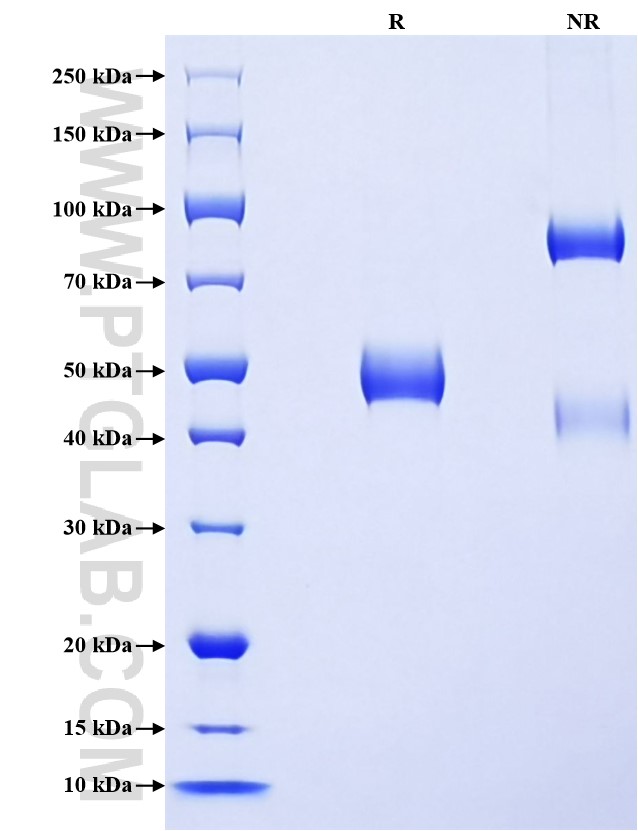Recombinant Mouse OX40L/TNFSF4 protein (rFc Tag)
种属
Mouse
纯度
>90 %, SDS-PAGE
标签
rFc Tag
生物活性
未测试
验证数据展示
产品信息
| 纯度 | >90 %, SDS-PAGE |
| 内毒素 | <0.1 EU/μg protein, LAL method |
| 生物活性 |
Not tested |
| 来源 | HEK293-derived Mouse OX40L protein Ser51-Leu198 (Accession# P43488) with a rabbit IgG Fc tag at the N-terminus. |
| 基因ID | 22164 |
| 蛋白编号 | P43488 |
| 预测分子量 | 43.7 kDa |
| SDS-PAGE | 45-55 kDa, reducing (R) conditions |
| 组分 | Lyophilized from 0.22 μm filtered solution in PBS, pH 7.4. Normally 5% trehalose and 5% mannitol are added as protectants before lyophilization. |
| 复溶 | Briefly centrifuge the tube before opening. Reconstitute at 0.1-0.5 mg/mL in sterile water. |
| 储存条件 |
It is recommended that the protein be aliquoted for optimal storage. Avoid repeated freeze-thaw cycles.
|
| 运输条件 | The product is shipped at ambient temperature. Upon receipt, store it immediately at the recommended temperature. |
背景信息
The OX40 ligand (OX40L) is also named as TNFSF4, CD252, Glycoprotein Gp34 and TXGP1. It belongs to the tumor necrosis factor family. OX40L is a costimulatory molecules that is mainly expressed on APCs, including mature DCs, B cells, and macrophages. OX40L interacts with OX40 (also CD134) that is preferentially expressed on activated CD4 T cells. OX40L expression in DCs is up-regulated by several stimulatory signalings, including thymic stromal lymphopoietin (TSLP), CD40, PAMPs, and IFN-α. Of note, IgE-Ag complex-activated mast cells up-regulate the expression of OX40L, and interactions between OX40L on mast cells and OX40 on T cells is required for T cell proliferation.
参考文献:
1.Sugamura K. et al. (2004) Nat Rev Immunol. 4(6):420-31. 2.Yashiro T. et al. (2016) Sci Rep. 6:34825. 3.Kurche JS. et al. (2012) J Immunol. 188(2):585-93. 4.Ito T. et al. (2005) J Exp Med. 202(9):1213-23. 5.Nakae S. et al. (2006) J Immunol. 176(4):2238-48.


